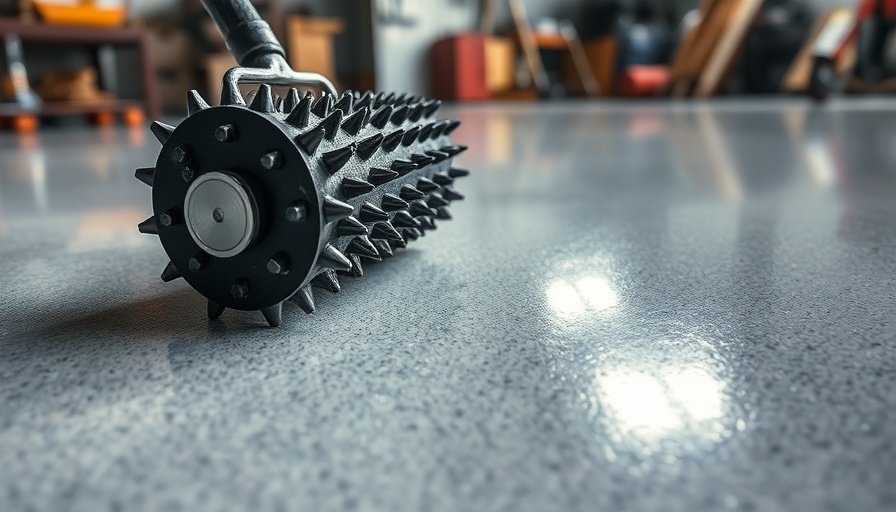
Transforming Your Kitchen: Creative Kitchen Tile to Wood Floor Transitions
If you're on the hunt for that perfect blend of flooring in your kitchen, you've likely faced the challenge of transitioning from tile to wood. Many homeowners resort to pre-made transition strips that often fall flat in character or functionality. However, with creativity and some DIY spirit, you can achieve a stunning and personalized transition from tile to wood. Let’s explore various inspiring ideas that can elevate your kitchen’s aesthetic while providing practical solutions for this common design hurdle.
Understanding Floor Transitions: Aesthetic and Functional Needs
A floor transition is not merely a decorative element; it’s essential for connecting two types of flooring effortlessly. The transition point should serve both aesthetic and functional purposes, ensuring safety by eliminating tripping hazards and enhancing the overall look of your kitchen.
The right transition style can seamlessly blend the distinct textures and colors of tile and wood, making your kitchen feel cohesive. This balance is crucial because it draws the eye and creates a smooth flow throughout your living space.
10 Inspiring Kitchen Tile to Wood Floor Transition Ideas
Below are some innovative kitchen tile to wood floor transition ideas that will inspire your next home improvement project:
1. Metal Transition Strips: A Modern Touch
Introduce sleek metal transition strips to your kitchen for a contemporary edge. These metal lines are available in various finishes, allowing you to match them perfectly with both your tile and wood floors. A metal strip not only provides a clean and polished look but also helps in maintaining a perfectly straight line that guides the eye across the space.
2. Customized Geometric Flow Transition
Consider a geometric tile layout for a dynamic and personalized transition. By arranging the tile to form unique shapes that flow into the wood, you can create a distinct style that captivates the eye. This approach can make the transition feel more like a work of art, effortlessly guiding guests through your kitchen.
3. Mix Tiles and Boards
Blending tiles with hardwood boards in equal sizes can create a visually appealing kitchen floor. This design choice highlights the beauty of both floor types, making them a dramatic focal point in your kitchen or entryway. It’s perfect for those looking to make a bold statement with their floors, offering a modern yet cozy vibe.
4. Tile Inlays for Added Texture
Using tile inlays can add depth and texture to your transition area. By laying smaller tiles in patterns or shapes amidst the larger flooring, you create a unique design element that enhances aesthetic appeal. This method can draw the eye and inject personality into your flooring scheme.
5. Gradual Transition for Cohesiveness
The gradual transition approach softens the line between tile and wood, creating a seamless visual flow. This style works especially well when dealing with two different textures and colors, as it helps both materials feel connected rather than abrupt. This subtle approach is ideal for modern kitchens aiming for simplicity.
6. Bold Contrast: Making a Statement
For those looking for an eye-catching feature, a bold contrast between the tile and wood can create significant visual interest. Pairing light wood with dark tile or vice-versa adds drama and sophistication to your kitchen. This design choice makes the transition point an intentional highlight rather than a cover-up for different flooring styles.
7. Curved Transitions for Elegance
Opt for a curved transition to add a soft touch to your kitchen. This flowing design gently guides the visual path from one floor type to another, lending an organic feel to the space. It’s particularly effective in kitchens that feature other soft or rounded elements.
8. Mosaic Patterns: Artistic Touch
Create a mosaic transition by arranging small tiles in vibrant colors or interesting shapes. This artistic transition not only serves as a functional connection between two surfaces but also acts as a stunning piece of artwork within your kitchen.
9. Perpendicular Tile Transition
A perpendicular tile-to-wood transition injects a bold statement into your design. This creates sharp contrasts in the floor and can serve as a focal point in the room, requiring precise cuts for a clean finish.
10. Overlapping for a Unique Blend
Create an overlapping flooring design where one material subtly extends over the other. This approach blends the two materials creatively, blurring the lines and enhancing the connection between spaces.
Design Tips: Ensuring Seamless Integration
When planning for a kitchen tile to wood floor transition, consider these helpful tips:
- Match Colors and Tones: Find complementary shades for a seamless look.
- Coordinate Textures: Similar textures between the two surfaces create continuity.
- Maintain Level Floors: Ensure that the tile and wood are even to avoid safety concerns.
By utilizing these tips and ideas, you'll not only address the transition between tile and wood but enhance the beauty of your kitchen. Don’t hesitate to infuse personal style, and remember that the hard work put into these transitions will reveal a uniquely appealing and functional space. Take your kitchen to the next level by exploring these creative ideas today!
If you need more personalized advice or inspiration, reach out to us for free design assistance!
 Add Row
Add Row  Add
Add 




Write A Comment